This Homemade
These protein bars are a satiating mix of protein and fat, making them a great option for anyone on a keto diet or carnivore diet. Adding hidden organ meats takes the nutritional quality to the next level. There are many easy keto recipes and savory carnivore diet recipes in which you can add hidden beef liver or beef heart.
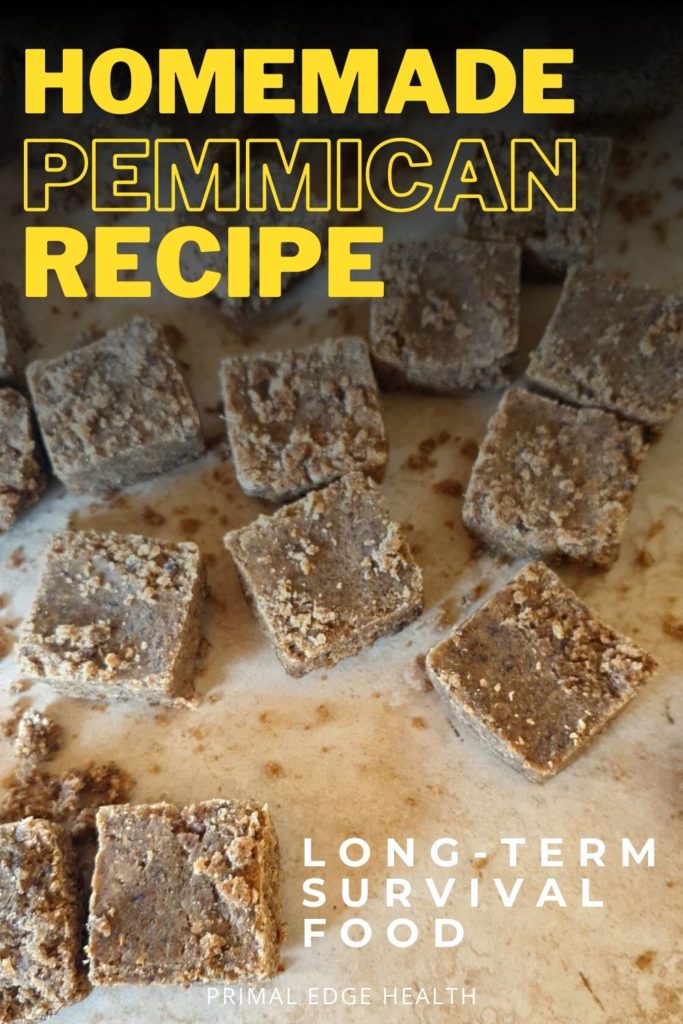
Table of Contents (click to view)
What is Pemmican Made Of?
Pemmican is the combination of dry, ground lean meat and animal fat. Most people make
Webster‘s Third New International Dictionary, 1967, defines
A concentrated food used by North American Indians consisting essentially of lean buffalo meat or venison cut in thin slices, dried in the sun, pounded fine, mixed with melted fat, and packed in sacks of hide.
The technique of combining meat with fat is a Native American food preservation method. Traditional
History tells us that adding dry berries to the meat and fat became popular during the American fur trade.
Honey may be added in also. Our children love this version! Honey is also a preservative, so there’s no risk of spoilage. I usually add a few heaping spoonfuls of honey, up to one-third of a cup, to the meat and fat mixture. Taste it as you go and stop when it’s sweet enough for you.
I always add salt to my homemade
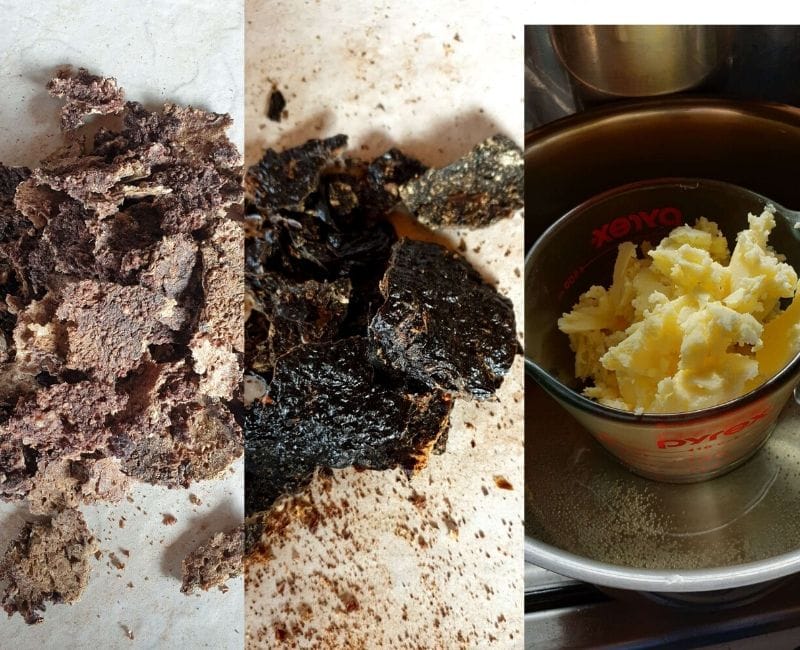
Is Pemmican Healthy?
Homemade
Often called “the bread of the wilderness,”
If you are interested in learning more about this historically important food, the wars fought over it, and how it was traditionally used in daily life, Vilhjalmur Stefansson wrote Not By Bread Alone, which contains a fascinating account of the
We include this book in our recommended reading list.
On the utility and function of
[Pemmican] was a travel food, and journeys were usually made in summer. Its most impressive record as the exclusive diet, or nearly so, of large numbers of men for long periods is from transportation crews of the fur trade working twelve to eighteen hours a day and straight through the noon period with its scorching or steaming heat.
Not by Bread Alone
The extreme supporters ofpemmican recommend it as the most concentrated food known to man or possible within modern concepts of physiological and chemical science. They say that is is a complete food in the sense that it will keep a hard-working man in top form for any length of time in any climate. They maintain, indeed, that it is the only concentrated food whichever has been tried out by large numbers of men for long periods.
On April 28, 1947, Dr. L. L. Savage of the University of Chicago started a 40-day trial of an all-pemmican diet. Two months after the study was initiated, he concludes:
Pemmican came as close as any to the ultimate ideal of a concentrated “pill” diet. He never felt any need for additional salt and he never felt any distaste for
“Pemmican“pemmican . He did note that smaller and smaller amounts satisfied his hunger as the experiment progressed. He lost 24 lb. of body-weight from his original weight of 214 lb. during the 40-day trial.
E. F. BInkerd, O. E. KOlari AND C. TRACY
Armour Food Company
Why add Organ Meat?
The great thing about a homemade
Organ meat recipes have been a fundamental part of my family’s diet because there are many health benefits of organ meat, they are very affordable, and we don’t want any part to go to waste.
After learning about the health benefits of liver and experiencing how good it makes me feel, I add it to many different recipes.
These are just a few recipes with hidden liver to get you started:
- Organ Meat Pie (it’s a family favorite!)
- Mini Meat Pies with Hidden Liver
- Cabbage Noodles with Hidden Liver
- Liver Chips (not hidden, but surprisingly subtle)
For personal use, I make
Liver is much easier to dry and grind into a fine powder. Heart has a great flavor but does not grind up as smoothly, producing a more noticeably crunchy texture in the finished bar.
In the recipe below, I only include liver in the ingredient list, but if you want to add heart also there is a note on how to do so.
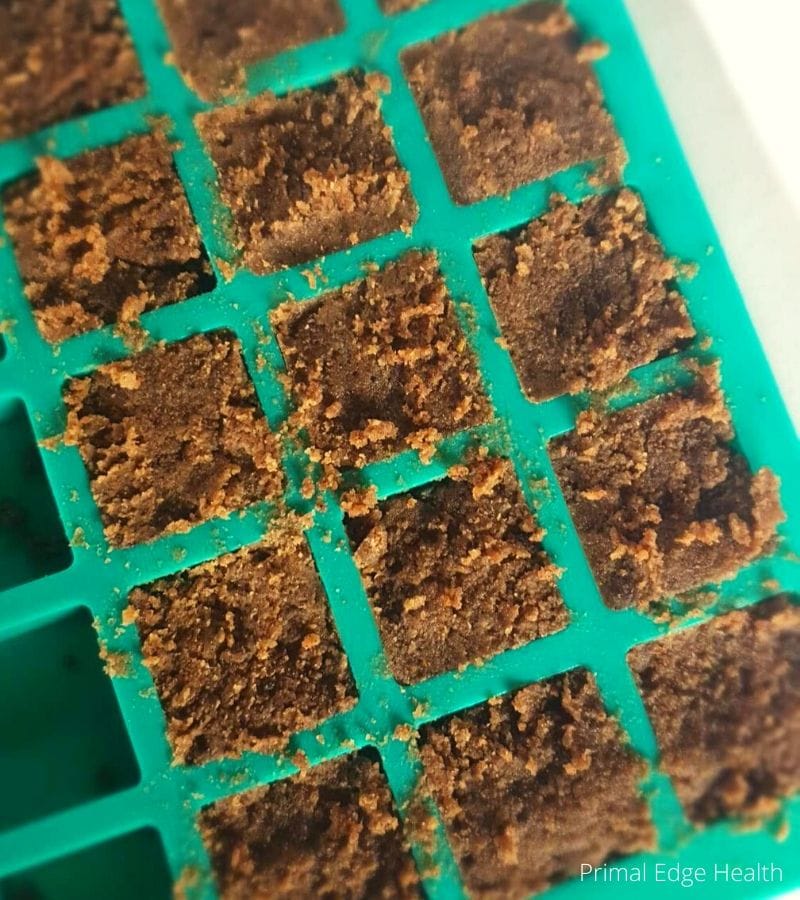
How to Make a Homemade Pemmican Recipe
If you prefer to make
Pemmican is a very adaptable recipe and easy to make in any amount.
Follow a 1:1 ratio of dry meat to fat by weight. You can fill any mold or roll balls by hand.
Measure the meat; measure an equal amount of tallow. Put the meat in a bowl and add salt.
If you want to use herbs and spices, I highly recommend Mesquite Seasoning by Mountain Rose Herbs. It’s my all-time favorite for
Combine all ingredients together. Working quickly, before the tallow solidifies, transfer the mixture to an 8×8-inch baking dish or other container and fill evenly. Score into individual pieces once firm.
Would you prefer to purchase
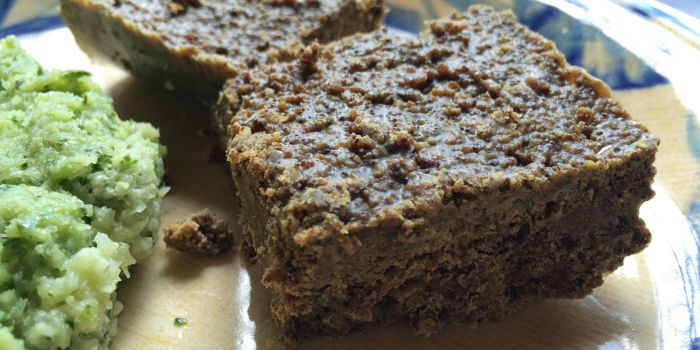
How to Dry Meat in a Dehydrator or Oven
Use a food dehydrator on the meat setting at 155°F (68°C) or dry in the oven at the lowest setting. Either way, spread the meat as flat and thin as possible.
Six pounds of raw meat makes one pound of dry meat powder.
Once the top is fully dry, flip it over and continue until the entire piece has no moisture. When in doubt, dry longer. Since we grind the meat up anyway, there is no harm in making it brittle, although you don’t want to cook it.
Working with lean ground beef and ground liver is extremely easy. As an alternative, thinly slice a lean cut of meat and liver instead. Spread the material flat on a tray or baking sheet.
It will take a few hours for the meat to dry. Once done, break it into smaller pieces and grind into a fine powder in a blender. You can use any ratio of liver to meat you like. I tend to do either 50/50 or 25/75 liver to meat.
How to Store Pemmican
Other than being properly prepared and kept in an airtight container,
The US Army used
I keep
It is possible to add

The Best Keto Camping Food
Pemmican is ideal for traveling, camping, hiking, and backpacking. This is a nutritionally complete food that will not melt, spill, or make a mess while out on the go.
Treated like a protein bar, this is also a great food to take out with children at an amusement park, nature park, or just on errands. Our children like it mixed with avocado or topped with cream cheese. Both ingredients are portable and easy to bring into your bag. Slice an avocado open, crumble the
If you can think of a better food than this, leave your suggestion in the comments.
A list of keto-friendly camping foods usually includes canned fish, boiled eggs, salami or dry sausage, aged cheeses, and nuts or seeds.
More Delicious Homemade Keto Camping Recipes
Pack some of these foods next time you head out to the great outdoors and you’ll never miss the carbs!
- Low-carb trail mix with cranberries, nuts, and coconut. There are 10 g of protein per serving!
- Homemade keto granola made not one but four different ways. I would first go for the chocolate peanut butter combo, although Almond Joy is a close second.
- Copycat Keto Cracker Jacks will surely be a win for the children, too. If you’re a pecan fan, you’ll love this recipe.
- Keto Seed Crackers are a dairy-free, grain-free, egg-free keto camping snack. These would be great with canned salmon and cucumber slices on top!
- Easy Low Carb Granola Bars, another great grain-free alternative made with nuts, seeds, coconut, and a tasty combination of cinnamon, vanilla, and almond butter for flavor. Bake them in the oven, and you’ll be ready to go.
- Keto Avocado Chips are a nut-free option to pack. The cumin and chili powder give a fun kick and recreate a healthy version of nacho cheese-flavored chips.
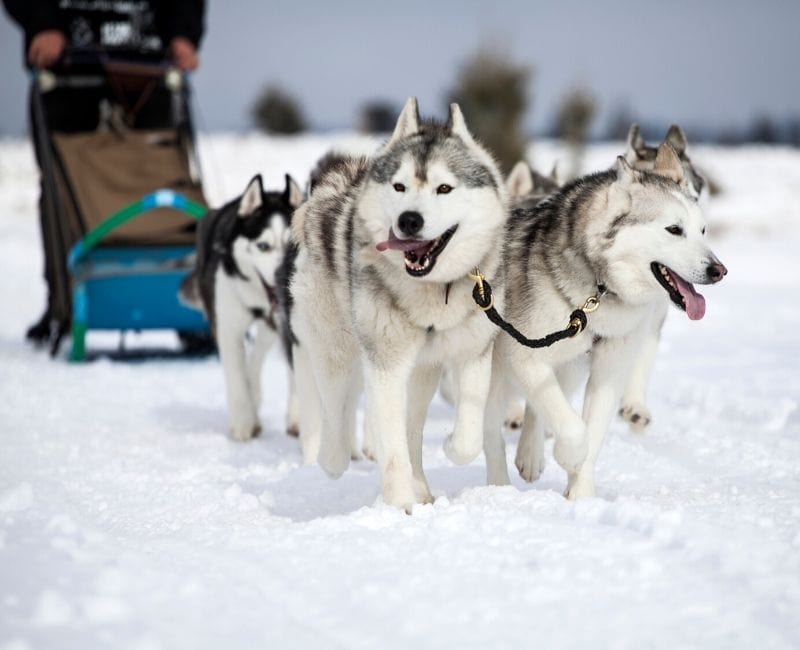
Pemmican Recipe for Dogs
Not only was
The paper “The Physiology of Sledge Dogs” by R. J. F. Taylor, 1956, tells us dog
Beef was a very expensive food source to use in the Arctic, so many expeditions chose to feed the more economical options of whale
Whale
Pemmican is recommended by CSJ K9 for hard-working dogs, stressed show dogs, and can help build up underweight dogs as well as for gundogs, agility dogs, sled dogs, and rescue dogs.
This is not the first time I’ve wondered if our dogs eat human food or we eat dog food.
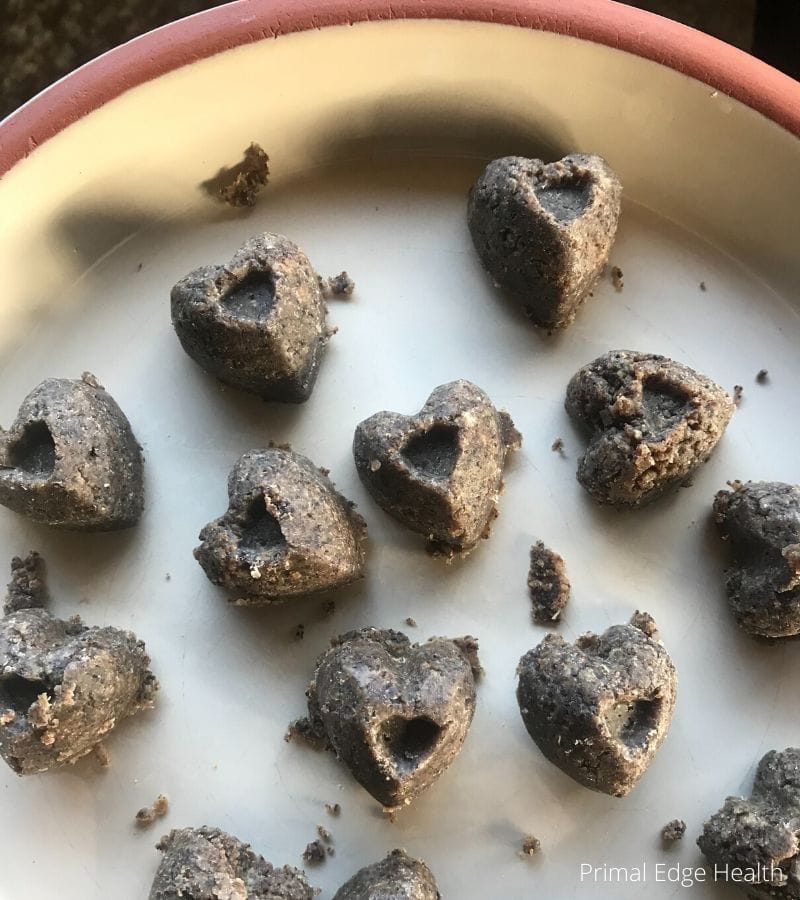
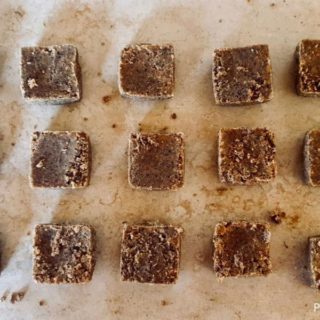
Homemade Pemmican Recipe (Optional Organ Meats)
Ingredients
- 300 grams dry, ground, lean meat
- 100 grams dry, ground, beef liver
- 1 tablespoon salt
- 2 tablespoons herbs and spices optional
- 400 grams beef tallow melted
Instructions
- Combine the dry meat, liver, and salt in a medium mixing bowl. Add optional herbs and spices, mix well.300 grams dry, ground, lean meat, 100 grams dry, ground, beef liver, 1 tablespoon salt, 2 tablespoons herbs and spices
- Melt tallow in a double boiler over medium heat.400 grams beef tallow
- Pour over the dry ingredients. Stir well until thoroughly combined. Break apart all clumps. Tallow should fully incorporate into the meat. If still crumbly, add more melted fat.
- Spread the mixture evenly in an 8×8-inch baking dish and leave to harden at room temperature or place in the refrigerator for 30-60 minutes. Once firm, score into squares. Alternatively, you can roll the “dough” into balls with your hands.
- Store pemmican in an airtight container in the pantry. If made correctly, it is shelf-stable and will never spoil. You may also store it in the refrigerator if that makes you more comfortable.
Notes
Nutrition & Macros
To obtain the most accurate representation of the nutritional information in a given recipe, please calculate the nutritional information with the actual ingredients and amounts used, using your preferred nutrition calculator. Under no circumstances shall the this website and the author be responsible for any loss or damage resulting for your reliance on the given nutritional information.
Featured in 12 Pemmican Recipes: Legendary Keto Survival Food
Originally published August 28, 2015. Updated July 15, 2020 with more details and images.
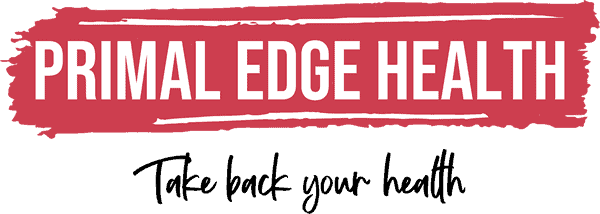
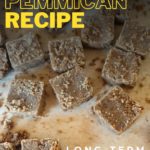
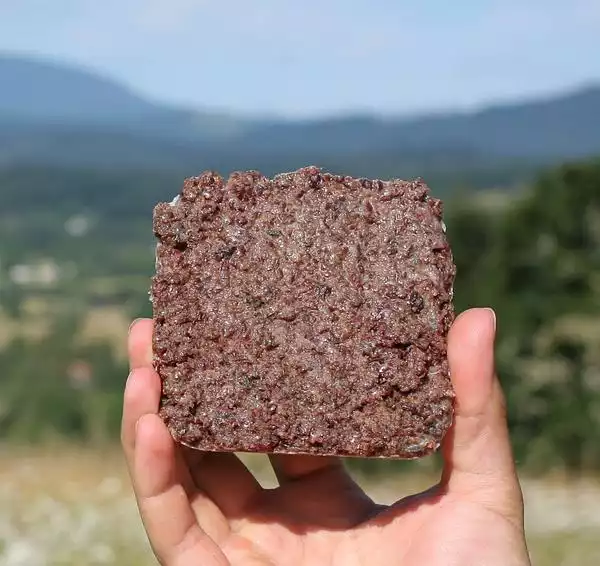
So you don’t actually cook the liver or beef, just dehydrate it?
Correct, just dehydrated. If you’re concerned about that, I suggest freezing the liver first for 14 days. This will kill any possible parasites. Then, thaw and use it in the recipe.
can i use a different sweetener other than honey, such as molasses or maple syrup?
Hi Esther, yes both of those options would be fine in this recipe.
Excellent post
Thank you, I’m glad you find the information about pemmican helpful! It’s a real superfood.
What is best cut if beef to use? Or is anything good?
I use lean ground beef but you can use any lean roast, slice it, and then dry it.
I really like the idea of liver in the pemmican, and have attempted to dry it in a convexion oven on Dehydrate, 150 degree F. for about 5 hours. It was like leather, but would not crumble in the blender. Should I continue to dry, spreading the sticky meat thin? Help!
Rendered some beef fat in slow cooker, came out great, smells great.
If this happens again, I suggest flipping the liver half way through cooking time and allowing the second side to dry. You should continue until the meat breaks firmly apart.
Hi, I made this last night but it won’t stay solid. Just wants to melt everywhere. I weighed the ingredients as I made so I know it was 1:1 meats to tallow w some honey. How do I dry the fat out some?
This is very strange to me because tallow naturally solidifies at room temperature. Even if you add too much or too little, the fat will still solidify. Are you in a very warm environment? Was the pemmican kept next to the stove or anything that gives off heat?
Is there a problem, flavor wise, or storage wise using lard rather than tallow? I am very new to this and very curious. I use lard for some recipes, but I noticed that you don’t mention pork meat. Is there a reason? Or just preference?
Hi Riky, I don’t suggest lard over tallow specifically because the lard is soft at room temperate and will not solidify into a firm bar shape. I hope that clears up your question! Thanks for stopping by 🙂
I searched locally for tallow and couldn’t find anything. I purchased grass-fed beef fat trimmings and followed the directions. It turned out beautiful, smells wonderful and tastes delicious in my pemmican. But it will only stay firm if I refrigerate it. My jar of tallow is like butter on a warm day, soft and will slide if I tilt it. (I’ve never trusted the lard to leave it out.) If the tallow doesn’t stay firm, I probably should refrigerate it also.
I am taking a trip soon and wanted to use it as snack bars and /or emergency food if absolutely necessary. It won’t travel well as is. I will try again. Any suggestions beyond, store bought tallow?
I love the videos of the family on your website.
Hearing about semisolid tallow is strange to me because I’ve never experienced that. Do you live somewhere very warm? Popping it in the fridge until solid and then brining it back out might do the trick. Maybe the tallow needs a kickstart to firm up. I’m sorry not to have a better answer.
It might be better to use suet, as the fat that surrounds the kidneys and organs are a bit more solid and is purer. The suet fat once rendered will harden better than the trimmings of fat. Maybe find a local butcher shop or local farmer to see about buying a large amount of suet.
Great recipe! I wanted to learn the best ratio for incorporating organ meat. Thanks, Jessica!
Thanks for sharing your tips Ravenna! I appreciate you chiming in on the conversation. Also, I’m happy to help with the organ meat question. Enjoy!
Delicious taste! Did a double recipe with the world being as it is! Thank you!
Great idea, Lisa! You never know when pemmican will come in handy.
Hi I just read through all the comments and got my answer
Thank you!
Great news Lucy! I’m glad you found the answer.
Hi Jessica, Great information! Thanks for sharing. I am curious, have you found that organ meats are good for long term food storage? Do you ever make pemmican purely out of organ meats, or is it recommended to have a mixture of muscle and organs? Between muscle and organs, which one is more shelf stable from your experience?
Hi Xiao, I haven’t noticed a difference between organ meat and muscle meat for long-term storage. However, there are variables of taste, texture, and fat:protein to consider. For me, I prefer a combination as you see in this recipe rather than pure organ meat. Hope this helps!
Can BUTTER be used in place of fat ,since it is the fat of the milk.
Hi Winfield, I wouldn’t recommend that. Tallow is a shelf-stable fat, while butter is not. Furthermore, tallow is solid at room temperature, while butter is soft. You finished recipe will be very different between the two fats.
I only have one problem with your recipe. You need to find a way to make a link that will allow printing the whole article for those who need to have All the directions and pictures available. I don’t save the recipes and directions for myself because I can read the recipe and figure out what to do but my daughters and son need the the whole article so that they can figure out what to do.,
I suggest sharing a link with your family and recommending they bookmark it to refer back to later once preparing. Your browser should have a print function located under File > Print. This will allow you to print the entire post and pictures with ease. I hope that helps!